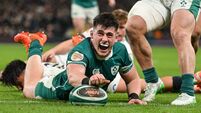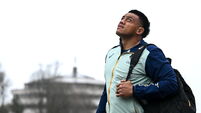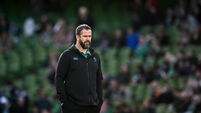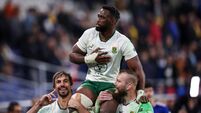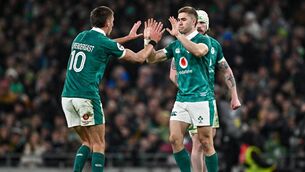Paul Rouse: The great, great grandson of a GAA president is now an English rugby star
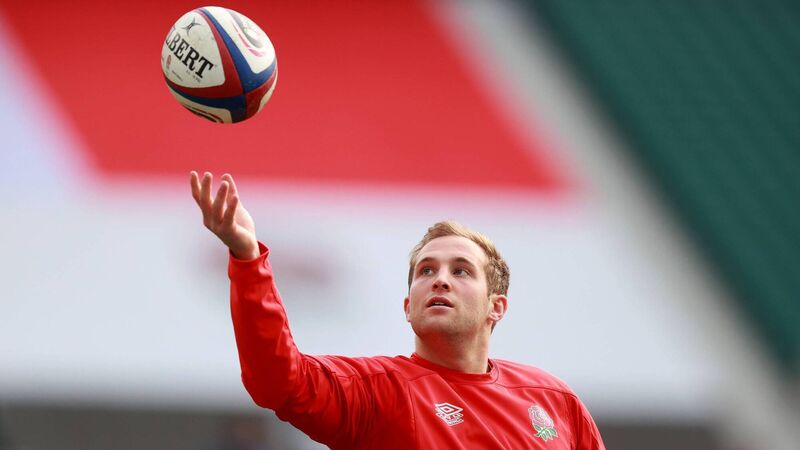
England international Max Malins
The complexities of history are never more obvious than in the flows of people between places separated by land and sea. The manner in which humans have migrated across history means that neat lines of identity can almost never be drawn.
This weekend, England play Ireland in a rugby match in Dublin. On the field for both teams are people whose ancestry demonstrates the flows of people around the world and, in particular, between the islands of Britain and Ireland.
The most interesting example in this instance is that of Max Malins, the English full-back.
Malins is 24 and is seeking to establish himself in the English team. But his people come from east Galway.
In fact, he is the great, great grandson of Peter J Kelly, who was the president of the GAA between 1889 and 1895.
As we will see, Kelly was also a revolutionary who was a leading member of the Irish Republican Brotherhood in Galway, and a man who played a role in the Parnell Split of 1891.
All told, Kelly is one of the forgotten men who built the GAA. Indeed, his name pales into obscurity beside that of Michael Cusack and Maurice Davin, the two acknowledged driving forces behind the founding of the GAA.
But Peter J Kelly, a tenant farmer from the townland of Killeenadeema, just across the lake from the town of Loughrea in Galway, actually spent more time as a leading official of the GAA than both Davin and Cusack combined.
One of the great challenges of history is examining why people act as they do? In this, the great lure is to project motivations. And so it is with Peter J Kelly. What precisely was it that drew him into leadership of the GAA?
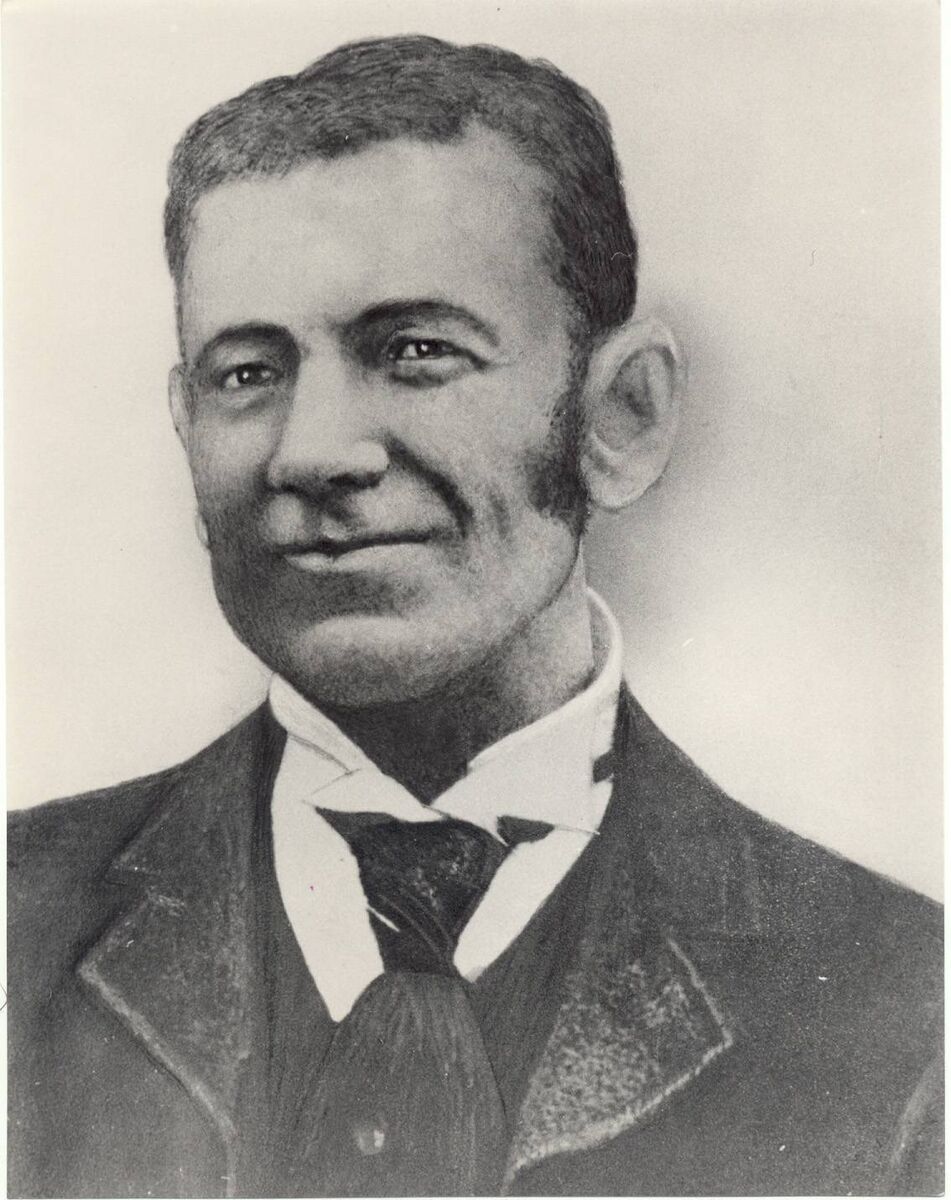
This question is a vital one because, as well as being an official central to the running of the GAA in Galway before being elected president of the GAA, Kelly’s work for the IRB, a secret revolutionary organisation dedicated to the overthrow of British rule in Ireland, was so extensive that he was routinely trailed by policemen from the special branch of Dublin Castle.
Indeed, a file held on Kelly in the Castle recorded that he was just 43 when he became president of the GAA. He stood 5’ 7¾” tall and of medium build. His eyes were described as being of “dark grey”, resting under dark eyebrows and thick black hair that was greying. He wore no beard, just short whiskers, which pushed across towards a crooked nose. The police recalled that he had round shoulders which were stooped forwards as he walked.
And, in the eyes of the police, Kelly was one of those IRB men who were using the GAA to recruit men for the purpose of armed rebellion. The detectives of the Special Branch relied heavily on secret informers for their information.
Within months of the founding of the GAA, informers were being paid to infiltrate its ranks. These reports made clear the view that the GAA was far more than merely a sporting organisation, even if the evidence produced by spies and informers was sometimes more than a little fanciful.
As the GAA gathered momentum in the years after its foundation in 1884, panicked reports from sections of the police claimed that the association was evolving into “one general society” of revolution. The GAA, the police believed, was “a most dangerous association”, led by “a gathering of the dangerous members of the IRB”. And the election of Kelly to the presidency of the GAA in January 1889 was clearly orchestrated by the IRB. At that month’s annual convention, the IRB ousted Maurice Davin and assumed control of every significant leadership position within the central executive of the GAA.
This assumption of control came at a cost. Seeing what was happening, leading Catholic clergy called on people to leave the GAA. This did not happen immediately. Moderate nationalists and those of no real politics at all chose to stay and play.
This proved impossible, however, when — under Kelly’s leadership — the Association pledged its loyalty to Charles Stewart Parnell in the summer and autumn of 1891, following the scandal which enveloped Irish political life when the sensational news emerged of Parnell’s affair with a married woman, Katherine O’Shea.
Kelly was one of the three-person delegation who had been sent by the GAA to meet Parnell and to confirm their support for him and his cause.
This support for Parnell induced outright hostility from clergy and a further loss of the support of moderates. The most evocative image of the GAA’s support for Parnell came in death; when he died in 1891, 2,000 GAA men marched alongside the cortege with hurleys draped in black.
There had been 1,200 GAA clubs in 1888 but this fell to a mere 220 by 1892. A year later, in 1893, just three counties were represented at the GAA’s annual convention — this amounted to some 14 men in total. As few as three teams entered the hurling championship played in that same year. Political involvement under Kelly’s leadership had all but destroyed the GAA. And this was a destruction that led the IRB, in turn, to drift away from the upper reaches of the GAA. What was the point of retaining control of a dwindling organisation which no longer seemed capable of providing the manpower for putative revolution?
Which brings us back to the motivations of men.
Peter J Kelly did not leave the GAA in the wake of the Parnell Split and the collapse in popularity of the GAA. He stayed. And he worked tirelessly to try and rebuild the GAA. He sought to make sure that the All-Ireland championships were run; he sought to get clubs and counties to re-affiliate, year after year; he sought to put its finances back on an even keel.
These were endeavours which suggest that what motivated Kelly was also sport —particularly his love of hurling. And it’s a reminder that it is unwise to assume that he acted out of political ambition, or at least just out of out political ambition.
Kelly was eventually succeeded as president in 1895 by Frank Dineen, the man who was fundamental to the GAA’s establishment of what became Croke Park as his headquarters.
It says much for the regard in which Kelly was held that after his death in April 1908, the GAA and the United Irish League contributed to a testimonial fund for the Kelly family which reached more than £500.
As Charlie Morgan of the Daily Telegraph has reported, Max Malins’ mother, Amanda, became aware of her great grandfather’s involvement in the GAA when Malins played for the Bristol Bears’ against Connacht in the European Champions Cup tie before Christmas last year.
Her relations still farm the land that was once farmed by Peter J Kelly and there is a regret that the extended family are denied the opportunity for a gathering in Dublin before the match.
Of course, such is the impact of Covid that the Malins family were unable to attend Twickenham for Malins’ Test debut against France. In keeping with the times, the celebration was restricted to a post-match FaceTime call after England’s 23-20 win over France on Saturday.
As a finishing aside, it is worth recalling that the story of descendants of the men who made the GAA making it good in England is not confined to Max Malins.
One of the men who conspired with Peter J. Kelly in both the GAA and the IRB was JK Bracken, who was a stonemason in Templemore. His son, Brendan Bracken (later known as The Viscount Bracken), was a great confidant of Winston Churchill, acting in cabinet during World War Two as Minister of Information and as First Lord of the Admiralty.
- Paul Rouse is professor of history at UCD

Unlimited access. Half the price.
Try unlimited access from only €1.50 a week
Already a subscriber? Sign in

